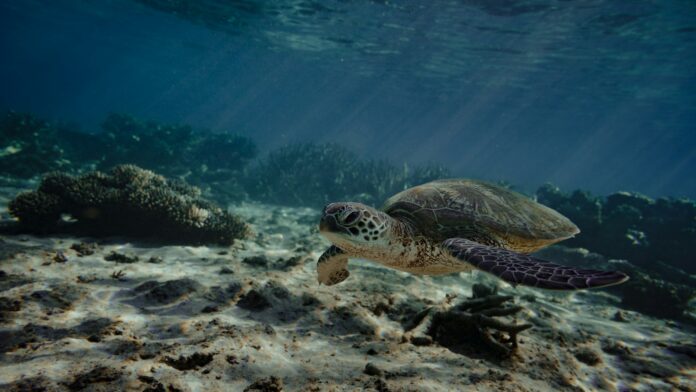Coral reefs stand as nature’s vibrant underwater metropolises, supporting roughly one‐third of all marine species and bolstering the livelihoods, food security, and safety of over a billion people worldwide. Yet, their dazzling beauty conceals a mounting crisis that resonates strongly in Western Australia, where legendary ecosystems like Ningaloo Reef are under siege from the relentless forces of climate change, overfishing, and pollution. As research on global coral restoration efforts intensifies—painting a stark picture of astronomical costs and limited success—it is clear that for WA, as elsewhere, effective reef conservation must extend far beyond the transplanting of a few corals.
A Ticking Clock on an Irreplaceable Resource
Historically celebrated as shimmering havens for biodiversity, coral reefs are now facing an existential threat. The process of coral bleaching—where rising sea temperatures during marine heatwaves force stressed corals to expel their essential symbiotic algae—has become alarmingly routine. Recent episodes along Australia’s northwest coast, where vast stretches of Ningaloo Reef were bleached during a severe warm-water event, echo the distressing trend documented worldwide (for an overview of marine heatwave impacts, see the National Oceanic and Atmospheric Administration at https://coralreef.noaa.gov/threats/).
In Western Australia, the stakes feel particularly high. Reef ecosystems along the coast, including the famed Ningaloo, contribute substantially to the local economy—not only by drawing eco-tourists whose spending injects millions of dollars into regional communities (Parks Australia details the economic importance of Ningaloo at https://parksaustralia.gov.au/ningaloo/discover/highlights/value-of-the-area/) but also by underpinning fisheries that bring in hundreds of millions of dollars each year. Beyond these direct benefits, healthy reefs serve as natural barriers that protect coastal towns and infrastructure from the ravages of storm surges and erosion.
The Mirage of Restoration
Efforts to restore damaged reefs have surged in the past decade, with a range of techniques now under trial—from coral gardening, where fragments cultivated in underwater nurseries are transplanted onto scarred reefs, to pioneering approaches that manipulate the microbiomes of corals in hopes of bolstering their resistance to heat stress. Yet, such methods have largely been confined to small, isolated patches of reef. Restoration projects typically rehabilitate only a few hundred to a few thousand square metres at a time, a stark contrast to the nearly 12,000 square kilometres of reef lost or degraded globally in just one decade.
Recent research estimates that restoring 10% of the world’s degraded coral areas could require investments exceeding A$26 trillion when high-end costs—up to A$226 million per hectare—are factored in. This sum is almost ten times the annual GDP of Australia, emphasizing that relying solely on restoration efforts is not only financially impractical but also an insufficient response to the scale of global coral loss (detailed cost assessments and failure rates, including a 35% failure figure due to poor planning and unanticipated climate events, are discussed in various scientific studies, for example see https://doi.org/10/gjz9mh).
Local Lessons and Global Comparisons
For Western Australia, the implications are uniquely acute. Ningaloo Reef, a marine jewel recognised for both its natural splendour and economic significance, has seen its own share of bleaching events—a sobering reminder that even protected sites are not immune to the sweeping impact of climate change. In comparing global trends with WA’s reality, researchers note that while coral gardening and seeding are the mainstays of restoration worldwide, the remoteness and rugged coastline of Western Australia often drive up logistical costs. This means that techniques which might be cost-effective in more accessible regions can soar in price when applied to remote reef locations along WA’s vast coastline.
Furthermore, restoration efforts around WA have sometimes been focussed in areas already compromised by human activity. In many cases, reefs closest to urban centres are targeted for restoration initiatives—not necessarily because they offer the best potential for long-term recovery, but because of easier access and greater immediate human interest. This approach risks perpetuating a cycle where only the less diverse, already-degraded sites receive attention, while ecologically critical areas remain unaddressed (see comparisons in studies at https://www.aims.gov.au).
Innovations and Community-Driven Solutions
Despite these challenges, hope is not entirely lost. Local scientists and institutions are spearheading innovative research to enhance coral resilience. Collaborative projects between the University of Western Australia (UWA) and the Australian Institute of Marine Science (AIMS) are experimenting with “assisted evolution” strategies. These involve selectively breeding heat-resistant corals that are better equipped to survive in warming seas—a promising development that could, in time, improve the success rates of restoration projects (more on this research can be found at https://www.aims.gov.au).
Simultaneously, Western Australian communities have embraced citizen science programmes that both educate and empower. Initiatives like the “Coral Warrior” project at Ningaloo Reef actively involve volunteers in transplanting coral fragments. By engaging local divers, tourists, and First Nations rangers—whose traditional knowledge of marine environments adds indispensable insight—these programmes foster a greater sense of environmental stewardship while supplementing scientific conservation efforts. Such inclusive measures have the potential not only to aid in recovery but to transform how local communities interact with their marine environments.
Policy, Protected Areas, and a Call for Integrated Action
The sobering reality of skyrocketing restoration costs underscores a critical truth: coral restoration, while offering hope in isolated cases, cannot substitute for comprehensive climate action. Without significant reductions in greenhouse gas emissions, the frequency and severity of bleaching events will only increase, undermining even the most painstaking restoration work. In Western Australia, this has prompted calls for a more holistic approach that includes strengthening marine protected areas (MPAs) and enforcing regulations to limit overfishing and pollution—strategies that have already shown success in regions such as Shark Bay and parts of the Ngari Capes Marine Park (further information on WA marine parks is available at https://wamsi.org.au).
Policymakers in Perth and beyond are also considering integrating traditional management practices. Indigenous communities, with deep-seated connections to the sea, are playing increasingly prominent roles in monitoring and managing reef health. Their involvement is proving vital in the co-management of marine environments and ensuring that conservation strategies are both culturally resonant and ecologically effective.
Looking Ahead
As reef ecosystems worldwide face unprecedented challenges, Western Australia finds itself at a crossroads. The allure of coral restoration projects has stimulated significant community engagement and local research; however, these projects must be complemented by urgent, far-reaching efforts to address climate change at its source. Without a robust reduction in global temperatures and a committed expansion of conservation measures, the dreams of restoring coral reefs will remain tantalisingly out of reach.
For clean, resilient reefs to endure into the future, efforts must be layered—integrating scientific innovation, local community initiatives, traditional environmental management, and rigorous policy enforcement. Only then can the vibrant underwater gardens that have long defined Western Australia’s natural heritage be preserved for generations to come.
Sources:
• National Oceanic and Atmospheric Administration (NOAA) Coral Reef Threats: https://coralreef.noaa.gov/threats/
• Parks Australia – Economic Value of Ningaloo Reef: https://parksaustralia.gov.au/ningaloo/discover/highlights/value-of-the-area/
• Australian Institute of Marine Science (AIMS): https://www.aims.gov.au
• Cost assessments and scientific studies on coral restoration: https://doi.org/10/gjz9mh
• Western Australian Marine Science Institution (WAMSI): https://wamsi.org.au

